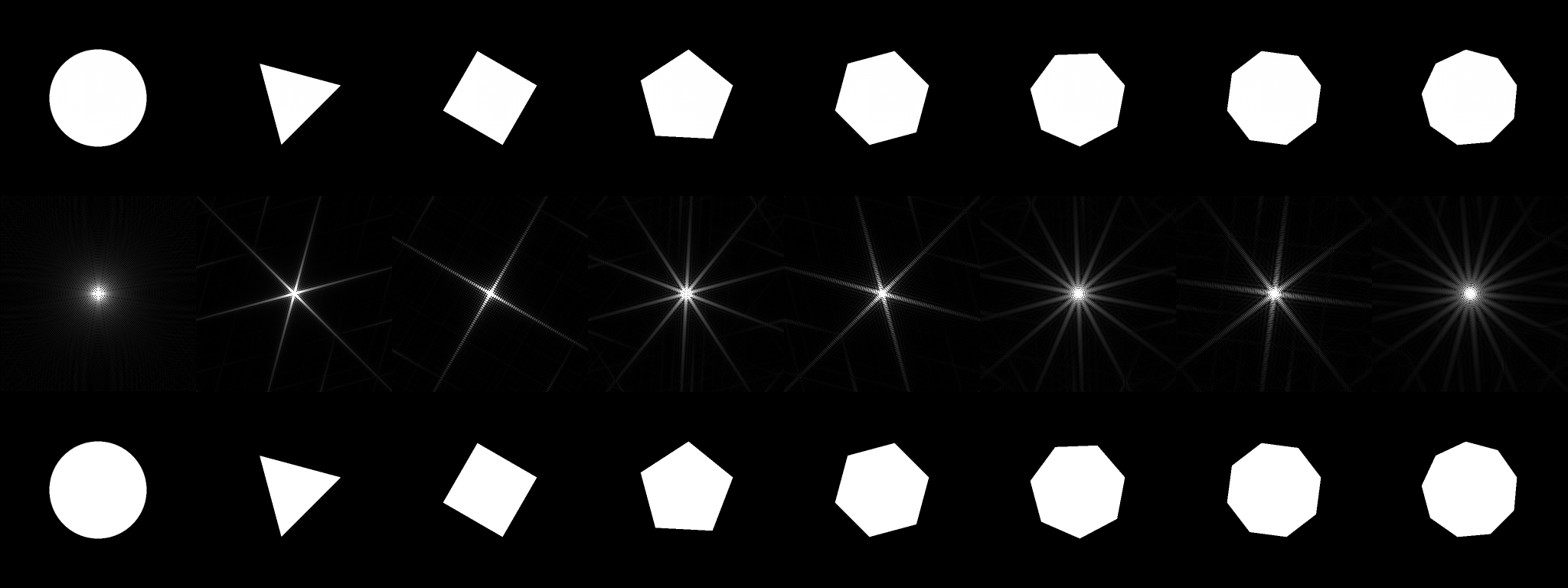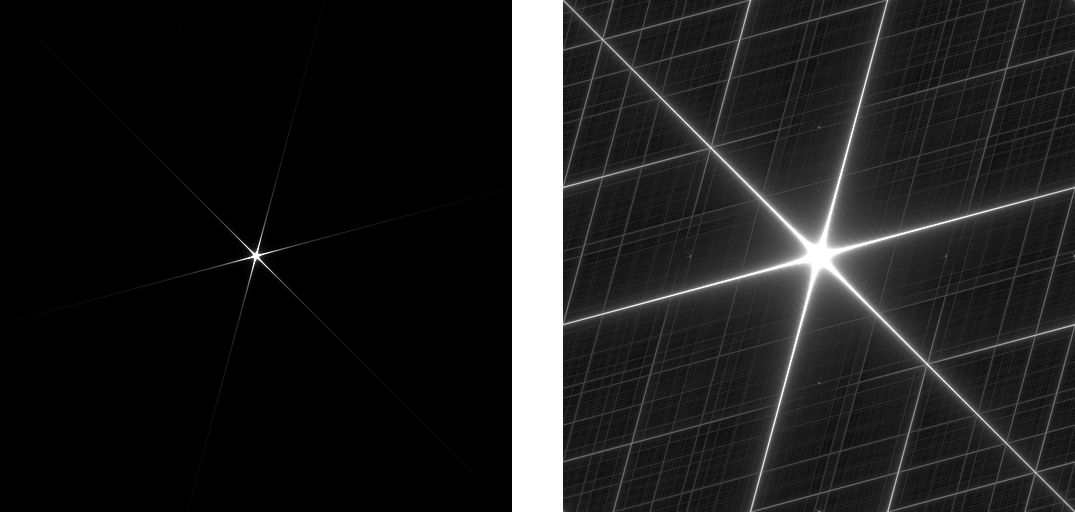Glare patterns
Glare in photography is due to Fraunhofer diffraction as light from distant objects passes through the camera diaphragm.
There is a magical connection between Fraunhofer diffraction (physics) and the Fourier Transform (math). As a matter of fact, the intensity of the Fraunhofer diffraction pattern of a certain aperture is given by the squared modulus of the Fourier Transform of said aperture.
Assuming a clean and unobstacled camera, the aperture is the diaphragm shape. Here you have the diffraction patterns that correspond to some basic straight-blade (polygonal) diaphragms.
Glare patterns

Interestingly, the Fourier Transform produces one infinite decaying streak perpendicular to each polygon edge. When the number of edges is even, the streaks overlap in pairs. That is why an hexagonal diaphragm produces 6 streaks, and an heptagonal diaphragm produces 14.
The leftmost pattern happens to be the Airy disk. The Airy disk is a limit case where the number of polygon edges/streaks is infinite.
The examples above were generated at 256x256. The visual definition of the pattern naturally depends on the resolution of the buffers involved in the computation of the Fourier Transform. However, note that the FT has an infinite range. This means that for ideal polygonal shapes, the streaks are infinitely long.
In the practical case, buffers are far from infinite, and you hit one property of the Fourier Transform that is often nothing but an annoyance: the FT is cyclic. The image below depicts what happens when one pumps up the intensity of one of the glare patterns obtained above: the (infinite) streaks, which warp-around the (finite) FT buffer, become evident.
Cyclic glare pattern

Bonus: Here’s some real-life glare I screengrabbed this evening at the European Athletics Championships:
